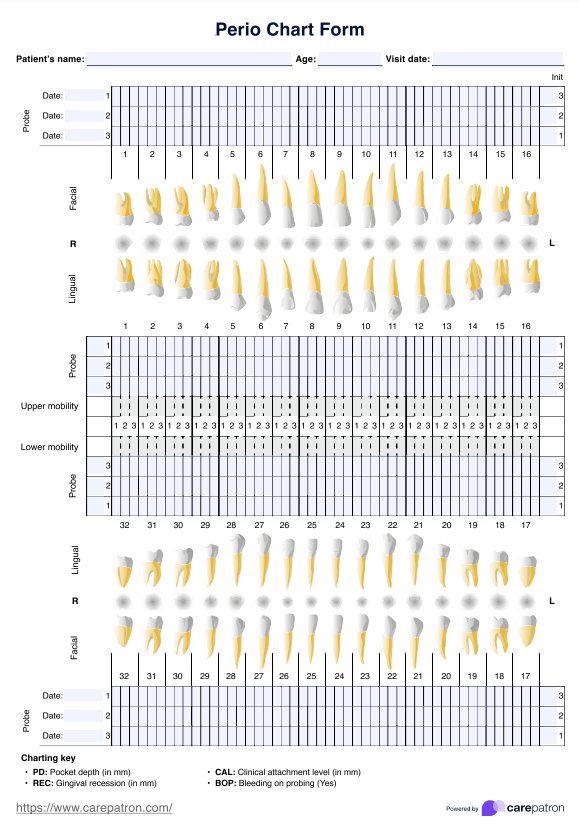A periodontal chart form is a tool used by dental professionals, such as dental hygienists and dentists, to document the health of a patient's gums. It records specific measurements like pocket depth and probing depth, helping identify problem areas and guide periodontal treatment. It also tracks a patient's dental history, ensuring accurate diagnosis and compliance with local dental board standards.

Perio Chart Form
Keep track of your patient's periodontal health with our free Perio Chart Form. Access the PDF template here.
Perio Chart Form Template
Commonly asked questions
Perio charting forms help detect early signs of gum disease by measuring and recording probing depths and pocket depths across the patient's mouth. This data allows dental professionals to create personalized periodontal treatment plans, prevent disease progression, and monitor improvements over time.
Dental professionals use periodontal charting to visually illustrate a patient's periodontal health, highlighting concerns such as deep pockets or inflammation. By reviewing the chart, patients gain a clearer understanding of their oral health and the progression of periodontal disease. This empowers them to take an active role in prevention and treatment, guided by their dentist, dental hygienist, or other dental specialists through a tailored treatment plan.
EHR and practice management software
Get started for free
*No credit card required
Free
$0/usd
Unlimited clients
Telehealth
1GB of storage
Client portal text
Automated billing and online payments











